 W
WFrançois-Jean Lefebvre de la Barre was a young French nobleman. He was tortured and beheaded before his body was burnt on a pyre along with Voltaire's Philosophical Dictionary nailed to his torso. La Barre is often said to have been executed for not saluting a Roman Catholic religious procession, though other charges of a similar nature were laid against him.
 W
WCharles de Gontaut, duc de Biron was a French soldier whose military achievements were accompanied by plotting to dismember France and setting himself up as ruler of an independent Burgundy.
 W
WMarie-Madeleine d'Aubray, Marquise de Brinvilliers was a French aristocrat who was accused and convicted of murdering her father and two of her brothers in order to inherit their estates. After her death, there was speculation that she poisoned upwards of 30 sick people in hospitals to test out her poisons, but these rumors were never confirmed. Her alleged crimes were discovered after the death of her lover and co-conspirator, Captain Godin de Sainte-Croix who saved letters detailing dealings of poisonings between the two. After being arrested, she was tortured, forced to confess, and finally executed. Her trial and death spawned the onset of the Affair of the Poisons, a major scandal during the reign of Louis XIV accusing aristocrats of practicing witchcraft and poisoning people. Components of her life have been adapted into various different mediums including: short stories, poems, and songs to name a few.
 W
WGuillaume Cale was a wealthy peasant from the village of Mello near Beauvais, who became leader of the peasant Jacquerie which broke out in May 1358 and continued for a month unchecked until the Battle of Mello on 10 June. Cale's origins are unknown; it is not clear how old he was at the time of the uprising, nor is anything known about his family and business ties, except that he was a reasonably well-off farmer.
 W
WJérôme Henri Carrein was the second-to-last convicted criminal to be executed by guillotine in France.
 W
WSante Geronimo Caserio was an Italian anarchist and the assassin of Marie François Sadi Carnot, President of the French Third Republic. Caserio was born in Motta Visconti, Lombardy. On 24 June 1894, he fatally stabbed President Carnot after a banquet, to avenge the executions of anarchist bombers Auguste Vaillant and Émile Henry.
 W
WGiuseppe Ceracchi was an Italian sculptor, active in a Neoclassic style in Italy, England and the nascent United States, who was a passionate republican during the American and French revolutions. He is remembered for his portrait busts of prominent British and American individuals.
 W
WHenri de Talleyrand-Périgord, comte de Chalais (1599–1626) was a favorite of Louis XIII of France.
 W
WThe Chauffeurs de la Drôme was a gang of four French criminals who were responsible for a wave of theft, torture, and murder in the department of Drôme in southeast France during the early years of the twentieth century.
 W
WHenri Coiffier de Ruzé, Marquis of Cinq-Mars was a favourite of King Louis XIII of France, who led the last and most nearly successful of many conspiracies against the Cardinal Richelieu, the king's powerful first minister.
 W
WCasimir Dankerque, known as The Monster of Artois, was a French criminal and serial killer responsible for murdering four pensioners in Pas-de-Calais between September and October 1935. Convicted of these murders, in addition to other crimes, he was guillotined in 1936.
 W
WHamida Djandoubi was a Tunisian sentenced to death in France. He was a Tunisian agricultural worker and convicted murderer. He moved to Marseille, France, in 1968 and six years later he kidnapped, tortured and murdered 22-year-old Élisabeth Bousquet. He was sentenced to death in February 1977 and executed by guillotine in September that year. He was the last person to date to be executed in Western Europe, and he was the last person to be lawfully executed by beheading anywhere in the Western world, although he was not the last person sentenced to death in France. Marcel Chevalier served as chief executioner.
 W
WLeonora Dori Galigaï was a French courtier of Italian origin, an influential favourite of the French regent Marie de' Medici, mother of King Louis XIII of France. Galigaï was married to Concino Concini, the later marquis and then marshal d'Ancre, during Marie's reign as Queen Mother and Regent of France.
 W
WMartin Dumollard was a French serial killer condemned to the guillotine after having been arrested and charged with the deaths of maids from 1855 to 1861. His victims were approached in Lyon by Dumollard, who offered them a nice house in Côtière. Convinced, they would eventually follow him and, during their wanderings on foot, he attacked them. All twelve assaults or attempted assaults occurred in the late 1850s and early 1860s until that of Marie Pichon on May 28, 1861. He was quickly arrested, along with his wife and accomplice, Marie-Anne Martinet, who stole the personal belongings and used them for resale. Their trial took place from January 29 to February 1, 1862: Dumollard was sentenced to death and his wife, twenty years of penal labour. This affair, which preceded that of Joseph Vacher by about thirty years, had a great repercussion in France; it is often considered one of the first cases of a serial killer in France. Dumollard is notably mentioned in Les Misérables by Victor Hugo.
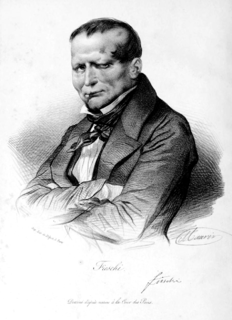 W
WGiuseppe Marco Fieschi was a Corsican and the chief conspirator in an attempted assassination of King Louis-Philippe of France on 28 July 1835. The attack on the King and his entourage, which made use of a unique volley gun known as the "infernal machine," killed 18 people, but the King only received a minor wound and Fieschi was quickly captured. He and two other conspirators were subsequently tried and executed.
 W
WThe Four Sergeants of La Rochelle were a group of French soldiers who plotted to overthrow the French monarchy of the Bourbon Restoration. Sergeants Bories, Pommier, Gobin and Raoulx were associates of the revolutionary Charbonnerie, a French secret society modelled after the Italian Carbonari. After being arrested for political conspiracy and membership of an outlawed organization, the four were guillotined in Paris on 21 September 1822.
 W
WPaul Gorguloff, originally Pavel Timofeyevich Gorgulov, was a Russian émigré who assassinated French President Paul Doumer at a book fair at the Hôtel Salomon de Rothschild in Paris on May 6, 1932.
 W
WÉmile Henry was a French anarchist, who on 12 February 1894 detonated a bomb at the Café Terminus in the Parisian Gare Saint-Lazare killing one person and wounding twenty.
 W
WHélène Jégado was a French domestic servant and serial killer. She is believed to have murdered as many as 36 people with arsenic over a period of 18 years. After an initial period of activity, between 1833 and 1841, she seems to have stopped for nearly ten years before a final spree in 1851.
 W
WPierre François Lacenaire was a French murderer and would-be poet.
 W
WThomas Arthur, comte de Lally, baron de Tollendal was a French general of Irish Jacobite ancestry. Lally commanded French forces, including two battalions of his own red-coated Regiment of Lally of the Irish Brigade, in India during the Seven Years' War. After a failed attempt to capture Madras he lost the Battle of Wandiwash to British forces under Eyre Coote and then was forced to surrender the remaining French post at Pondicherry. After a time spent as a prisoner of war in Britain, Lally voluntarily returned to France to face charges where he was beheaded for his alleged failures in India. Ultimately the jealousies and disloyalties of other officers, together with insufficient resources and limited naval support prevented Lally from securing India for France. In 1778, he was publicly exonerated by Louis XVI from his alleged crime.
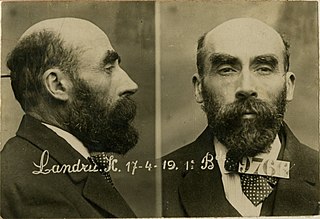 W
WHenri Désiré Landru was a French serial killer, nicknamed the Bluebeard of Gambais, who murdered at least seven women in the village of Gambais between December 1915 and January 1919. Landru also killed at least three other women, plus a young man, at a house he rented from December 1914 to August 1915 in the town of Vernouillet, 35 km northwest of Paris. The true number of Landru's victims, whose remains were never found, was almost certainly higher.
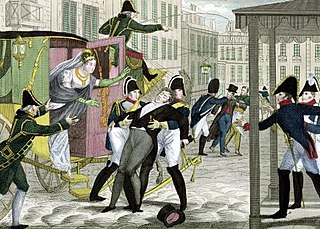 W
WLouis Pierre Louvel was the assassin of Charles Ferdinand, Duke of Berry.
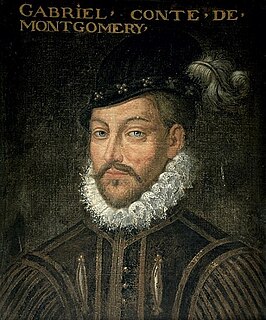 W
WGabriel de Lorges, Count of Montgomery, Lord of Lorges and Ducey, was a French nobleman of Scottish extraction and captain of the Scots Guard of King Henry II of France. He is remembered for mortally injuring Henry II in a jousting accident and subsequently converting to Protestantism, the faith that the Scots Guard sought to suppress. He became a leader of the Huguenots. In French-language contexts, his name is spelled Montgommery.
 W
WFrançois de Montmorency-Bouteville was the second son of Louis de Montmorency, Comte de Bouteville, Vice-Admiral of France under Henri IV. In 1612 he became prior of Le Plessis-Grimoult in name, and in person in 1616. He remained prior until 1618 when he stepped down in favor of his brother Louis. François succeeded his brother Henri in 1616 and became Duke of Luxembourg and Governor of Senlis. He served with distinction at the sieges of Saint-Jean-d'Angély, Montauban, Royan and Montpellier.
 W
WFelice Orsini was an Italian revolutionary and leader of the Carbonari who tried to assassinate Napoleon III, Emperor of the French.
 W
WMarcel André Henri Félix Petiot was a French doctor and serial killer. He was convicted of multiple murders after the discovery of the remains of 23 people in the basement of his home in Paris during World War II. He is suspected of the murder of around 60 victims during his lifetime, although the true number remains unknown.
 W
WPrado was a Spanish murderer who was guillotined in France.
 W
WFrançois Claudius Koenigstein, also known as Ravachol (1859–1892), was a French anarchist. He was born on 14 October 1859, at Saint-Chamond, Loire and died by being guillotined on 11 July 1892, at Montbrison after being twice found guilty of complicity in bombings.
 W
WGiuseppe Sasia, known as The Shepherds' Killer and The Haut-Var Killer, was an Italian criminal and serial killer, who, in the span of several months in 1934, killed at least 4 men in Draguignan, France, with the aim of stealing from them. He was later guillotined for his crimes.
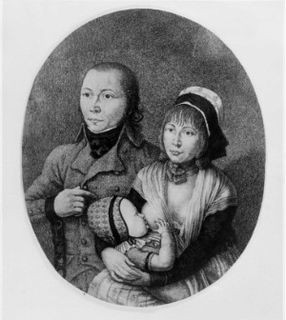 W
WJohannes Bückler was a German outlaw who orchestrated one of the most famous crime sprees in German history. He has been nicknamed Schinderhannes and Schinnerhannes in German and John the Scorcher, John the Flayer and the Robber of the Rhine in English. He was born at Miehlen, the son of Johann and Anna Maria Bückler. He began an apprenticeship to a tanner but turned to petty theft. At 16 he was arrested for stealing some of the skins, but he escaped detention. He then turned to break-ins and armed robbery on both sides of the Rhine, which was the border between France and the Holy Roman Empire.
 W
WJoseph Vacher was a French serial killer, sometimes known as "The French Ripper" or "L'éventreur du Sud-Est" owing to comparisons to the more famous Jack the Ripper murderer of London, England, in 1888. His scarred face and plain, white, handmade rabbit-fur hat composed his trademark appearance. He killed 11 people, many of whom were adolescent farm workers, between 1894 and 1897.
 W
WAuguste Vaillant was a French anarchist, most famous for his bomb attack on the French Chamber of Deputies on 9 December 1893. The government's reaction to this attack was the passing of the infamous repressive Lois scélérates.
 W
WEugen Weidmann was a German criminal and serial killer who was executed by guillotine in France in June 1939, the last public execution in that country.
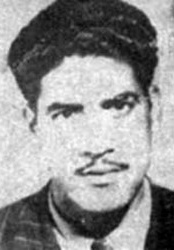 W
WAhmed Zabana was an Algerian militant who participated in the outbreak of the Algerian War. He was executed by guillotine on June 19, 1956, in Algiers.